Full buffet breakfast from 7:30 am in the restaurant of the hotel.
Following breakfast we enjoy a guided cultural walking visit of some of the city’s major sites. Strasbourg Cathedral. Place Gutenberg. Place Kléber. Kammerzell House. We’ll be sure to be at the Astronomical Clock at 12:30 when it does its major performance.
The Cathedral Notre Dame
Strasbourg’s cathedral is one of Europe’s finest Gothic structures and owes a great deal of its charm to the pink sandstone from the Vosges with which it was built.

The central doorway is the most richly decorated and the tympanum is made of four historiated bands, the first three of which date from the 13th century while the fourth is modern. They depict scenes from the Old and New Testaments. The beautiful 13th-century clock doorway is the cathedral’s oldest and consists of two adjacent Romanesque doors separated by a statue of Solomon.
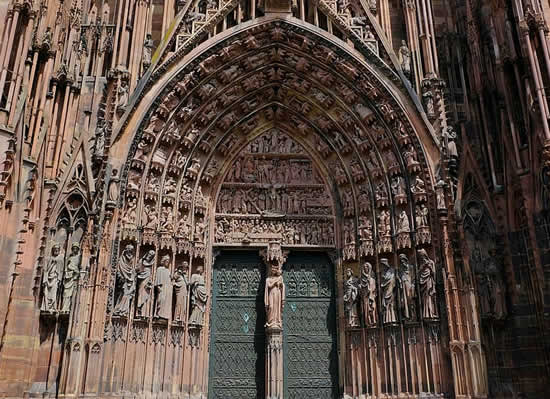
The cathedral’s most popular feature is its astronomical clock, designed by mathematicians and built by Swiss clock-makers between 1550 and 1574. It stopped in 1780 but a Strasbourg native called Schwilgué studied it for 30 years and then rebuilt it between 1838 and 1842.
The seven days of the week are represented by chariots led by gods who appear through an opening below the dial. Diana starts off the week on Mondays then come in order Mars, Mercury, Jupiter, Venus, Saturn and Apollo.
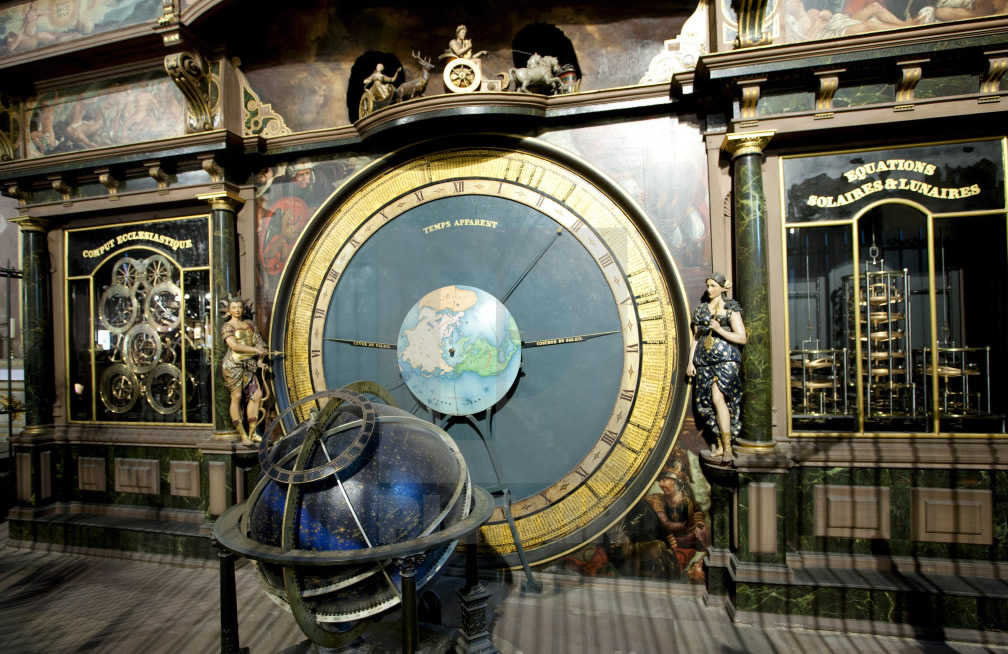
A series of automata strikes twice every quarter hour while on the hour Death deals the blow. On his last stroke, the second angel of the Lion’s Gallery reverses his hourglass. The clock is ½ hour behind normal time so the midday chiming occurs at 12:30 pm and this is when the big event of the clock takes place with a huge parade of figures and activities. The Apostles pass in front of Christ, Jesus blesses them as the cock flaps his wings and crows three times, a reminder of Peter’s denial of Christ.
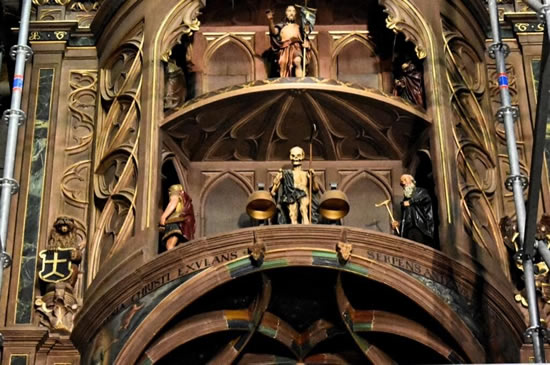
A moveable feast today as we have a walking visit of multiple gourmet establishments with drinks along the way. Local gastronomic guides from Strasbourg will take us around. Tastings will include Crémant d’Alsace sparkling wine, farmhouse Munster cheese, local gingerbread, Kugelhopf, foie gras, pretzels, tarte flambée both savoury and sweet and eau de vie. No need for a formal lunch!
Munster or Munster-géromé is a strong tasting, soft cheese made mainly from milk from the Vosges, between the regions of Alsace, Lorraine and Franche-Comté.

Kugelhopf is a very rich combination of part bread and part cake. The tall angular shape of the Kugelhopf inspired the American bundt cake. Though it originated in Austria, this sweet raisin-filled yeast bread has become a specialty of Alsace where it is often served for breakfast or brunch.
An eau de vie is a clear, colorless fruit brandy that is produced by means of fermentation and double distillation. Some commonly available flavors are eau-de-vie de poire (pear), de pomme (apple), de mirabelle (yellow plum), de pêche (peach), de framboises (raspberry).
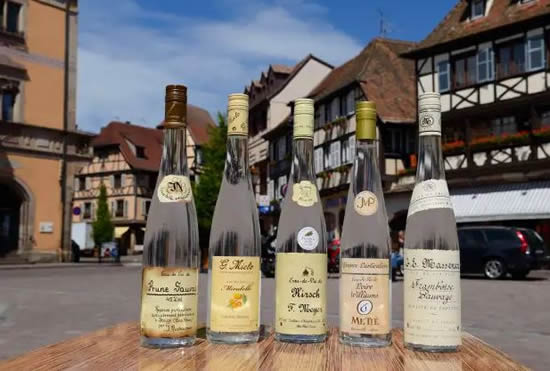
Late afternoon we finish our gourmet circuit (unless you want to keep going!) and there will be time to browse the shops or relax in a sunny café.
We reconvene at the historic wine cellars of the Hospices de Strasbourg for a fun and informative winetasting.
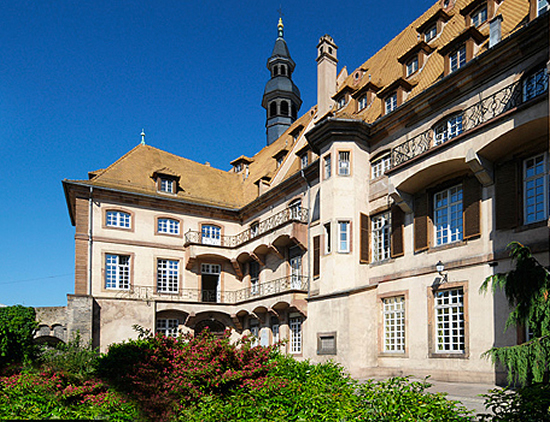
Wines and The Hospices de Strasbourg
For more than 600 years, wine was made and stored in the historic cellars of the Strasbourg Hospices. The operation fell upon hard times but in 1999, some thirty Alsatian wine domains joined forces to save the cellar.
The premises were restored to their full glory and the winemakers began raising and selling their wines from here. Only wines made from the local grapes - Riesling, Sylvaner, Muscat, Pinot Blanc, Pinot Gris, Klevener de Heiligenstein, Gewurztraminer grapes and the only red grape from Alsace, Pinot Noir, are accepted. The aging in oak barrels, a tradition somewhat lost in Alsace, is a common denominator for all these wines.
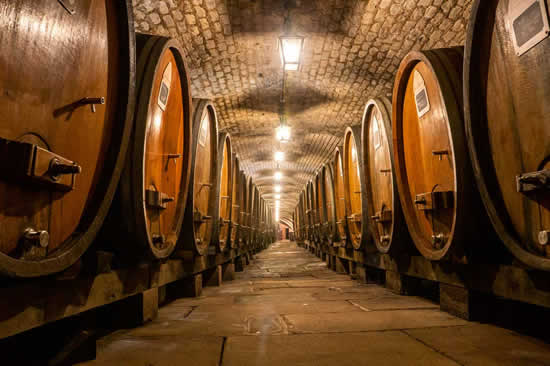
The profits made by the hospital’s wine sales store, located in the cellar itself, are used to purchase medical equipment for the Strasbourg Hospital.
Following this amazing visit, we have dinner at leisure with plenty of suggestions for simple bistros, gastronomic restaurants and friendly winstubs.
Overnight: Hôtel de l’Europe, Strasbourg.
Back to Top |

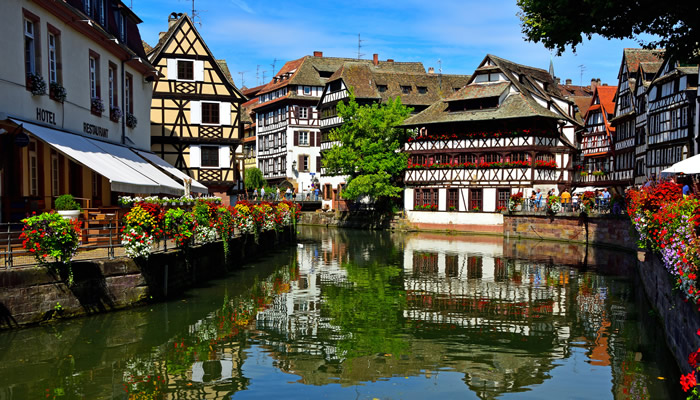 Strasbourg, France
Strasbourg, France